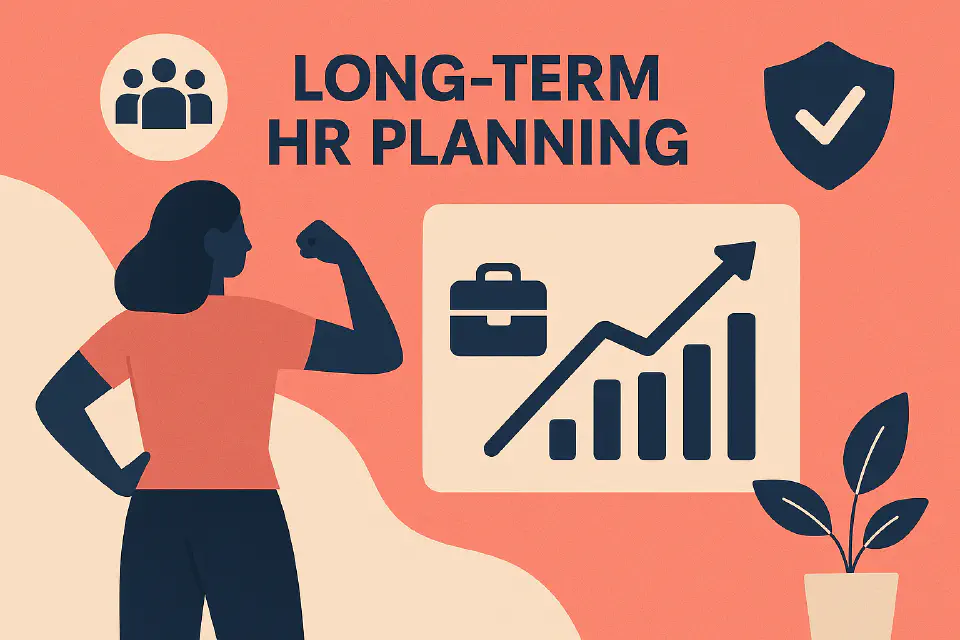
Long-Term HR Planning: Building Sustainable People Strategies
HR isn't just about solving today's problems—it’s about anticipating tomorrow’s. Long-term planning makes HR a strategic force.
Long-term HR planning ensures that people strategies are not just reactive, but anticipatory, strategic, and sustainable. It moves HR from an operational support role to a central driver of long-term value creation.
Why Long-Term Planning Matters
Short-term hiring goals are important—but without a long-term view, organizations risk reacting to market shifts instead of shaping them. Long-term HR planning helps anticipate skills gaps, talent shortages, and leadership transitions.
It also enables HR to:
- Align talent development with future business needs
- Prepare for digital or structural transformation
- Ensure succession and capability building
- Optimize workforce cost and productivity over time
Core Components of Long-Term HR Planning
Effective long-term planning requires a structured approach rooted in data, business forecasting, and scenario analysis.
1. Strategic Workforce Planning (SWP)
At its core is SWP—a discipline that links HR planning with long-term organizational strategy.
It considers internal factors (e.g., attrition, upskilling, promotions) and external ones (e.g., labor markets, technology, demographic shifts).
2. Capability-Based Planning
Rather than focusing solely on headcount, modern HR strategy looks at workforce capabilities: what your organization needs to be able to do in the future, not just how many people it needs.
Capability-based planning helps:
- Design roles around outcomes
- Support agile, cross-functional teams
- Embed flexibility into the workforce model
3. Leadership Pipeline & Succession
Sustainable HR strategy must prepare future leaders—not just replace them. Long-term planning includes:
- Succession planning for critical roles
- Leadership development aligned to culture and strategy
- Exposure to stretch assignments, mentoring, and shadowing
4. Scenario Planning
What if your key market disappears? What if AI automates half your functions? Scenario planning helps HR prepare for multiple futures—not just the most likely one.
It allows proactive moves like:
- Reskilling at scale
- Reorganizing teams
- Partnering for contingent or freelance talent
Integrating HR Planning into Business Strategy
Long-term HR planning is most impactful when it’s embedded into enterprise strategic planning—not treated as an HR-only exercise.
- HR should be part of annual and multi-year strategy cycles
- Planning timelines should align with finance, operations, and innovation roadmaps
- HR leaders must work closely with the C-suite to translate goals into people capabilities
Digital Tools & Data in Long-Term Planning
Today’s tools enhance the quality and speed of HR planning:
- Workforce analytics dashboards
- Predictive modeling and AI-driven forecasting
- External labor market intelligence
- Internal mobility and capability databases
But tools alone aren’t enough—HR teams need data literacy and strategic acumen to use them effectively.
Best Practices for Long-Term HR Planning
Conclusion
Long-term HR planning turns people strategy into a competitive advantage. It requires discipline, collaboration, and a shift in mindset—from filling roles to building capability. In a world of accelerating change, HR’s value lies not in reacting—but in preparing the ground for what’s next.
Next up: How does strategy execution actually work in HR? And what governance models keep it on track?